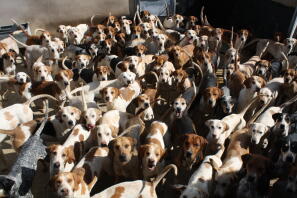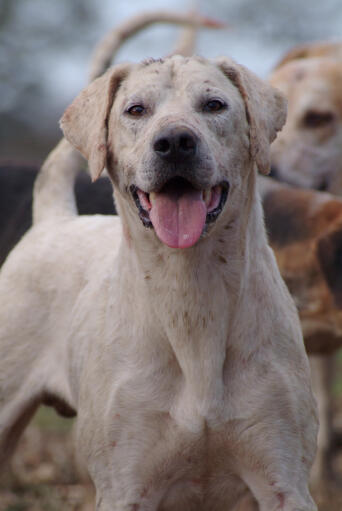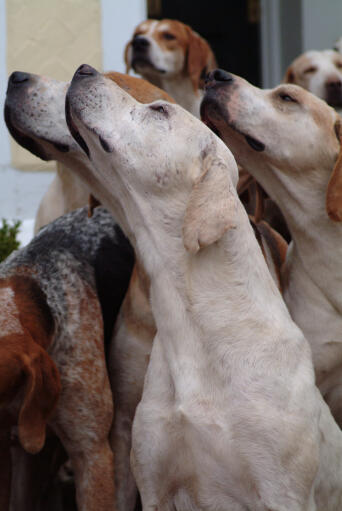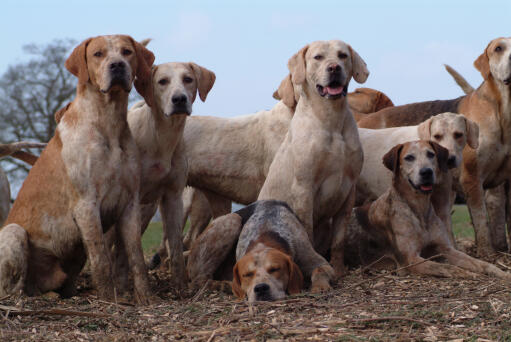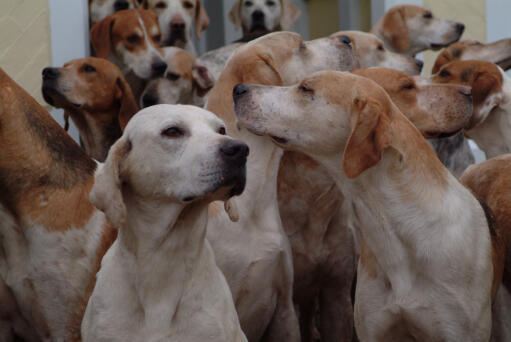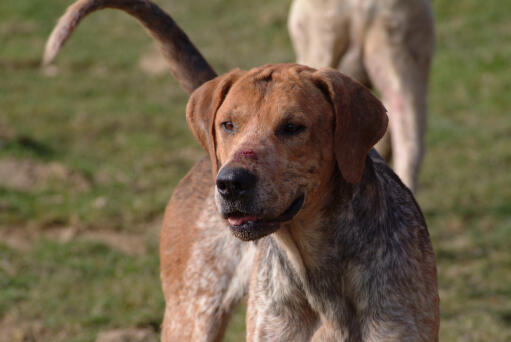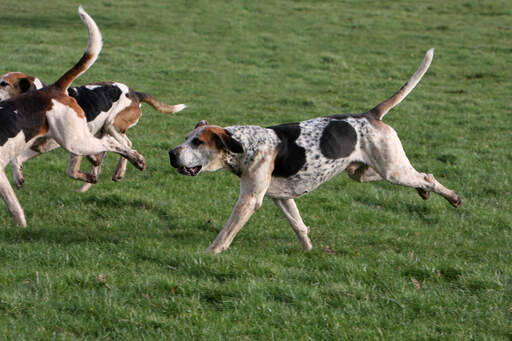Foxhound (English) Dogs







History
These dogs have been around for a few hundred years, but despite this their exact origin remains unknown. They are possibly a mix between the Fox Terrier and Greyhound. In 1750’s hunters started using them to locate and chase down foxes. By the end of the 1800’s over 100 packs (around 50 dogs per pack) were registered in England. Despite the fact that fox hunting is now illegal in Britain, they are still used in mock hunts. They have also gained popularity as show-dogs and house-pets but are still mainly seen in the company of hunters.
Behaviour
The foxhound is a very active dog, they can quite literally run for miles on end without tiring. They will be good within a family and will get along well with other household pets and horses, just bear in mind that they will need either human or canine companionship to be happy. These dogs were bred to live in packs, and a family setting will fulfil this role. They will usually get along well with other dogs, especially if socialized from a young age. They like to play and will build strong bonds with other family members. Due to the fact that these dogs are scent hounds, they will dash off in pursuit of a smell if given half a chance. Recalling can be tricky with this breed as they like to run, so it’s best to walk in a secure area or on a lead. These dogs are very active and will make for a good jogging pattern, but be warned, they will outrun you. English foxhounds are gentle, calm and a sociable breed, but they can be slightly weary of strangers at first. They are good with children.
To achieve a well rounded dog firm, but loving, training will be needed. They can be stubborn at first but with a bit of patience and perseverance you’ll be able to teach them loads of tricks and commands. They are very agile and often perform well in flyball-type competitions. They'll require long walks everyday and ideally a chance to run off-lead, but for reasons mentioned above, this needs to be in a secure area. Once these dogs start running you have little to no chance of catching them. At home they’ll happily lay around but will be ready for action at a moment's notice. You’ll have a hard time tiring out this dog. There are two types of this breed, the show type and the field type.
The field type of this dog seems to have slightly more energy than it’s show counterpart. They don’t bark very often, but will get excited when they pick up a scent. Minimal grooming is needed and a weekly brush should do the trick. They aren’t really prone to any diseases or illnesses and are generally a very healthy breed. Canine Hip Dysplasia is occasionally seen but this seems to be rather uncommon.
Temperament
Bred for life in a pack, these dogs will need companionship in their lives in order for them to be truly happy. They hate being alone. Other dogs or a family will fulfill their needs for a pack.
They are good with children and will become devoted to their family. These dogs were bred to chase foxes for miles on end and due to this they have heaps of stamina. This means that large amounts of exercise will be needed to satisfy their needs, and even after this they most likely won’t be tired out and will still be ready to go outside for another walk at a moments notice.
Health Problems
English Foxhounds are prone to canine hip dysplasia (CHD), kidney disease and epilepsy.
Breed Details
- Status: Common
- Life Expectancy: 10 - 13 years
- Weight: 63 - 75 pounds
- Height: 23 - 27"
- Rare: No
- Coat: Short
- Grooming Requirements: Once a week
- Town or Country: Country
- Minimum Home Size: Large House
- Minimum Garden Size: Large Garden
- Breed Type: Hound
- Size: Large
- Energy Level: High
- Exercise Required: Over 2 hours
Foxhound (English) Pictures
